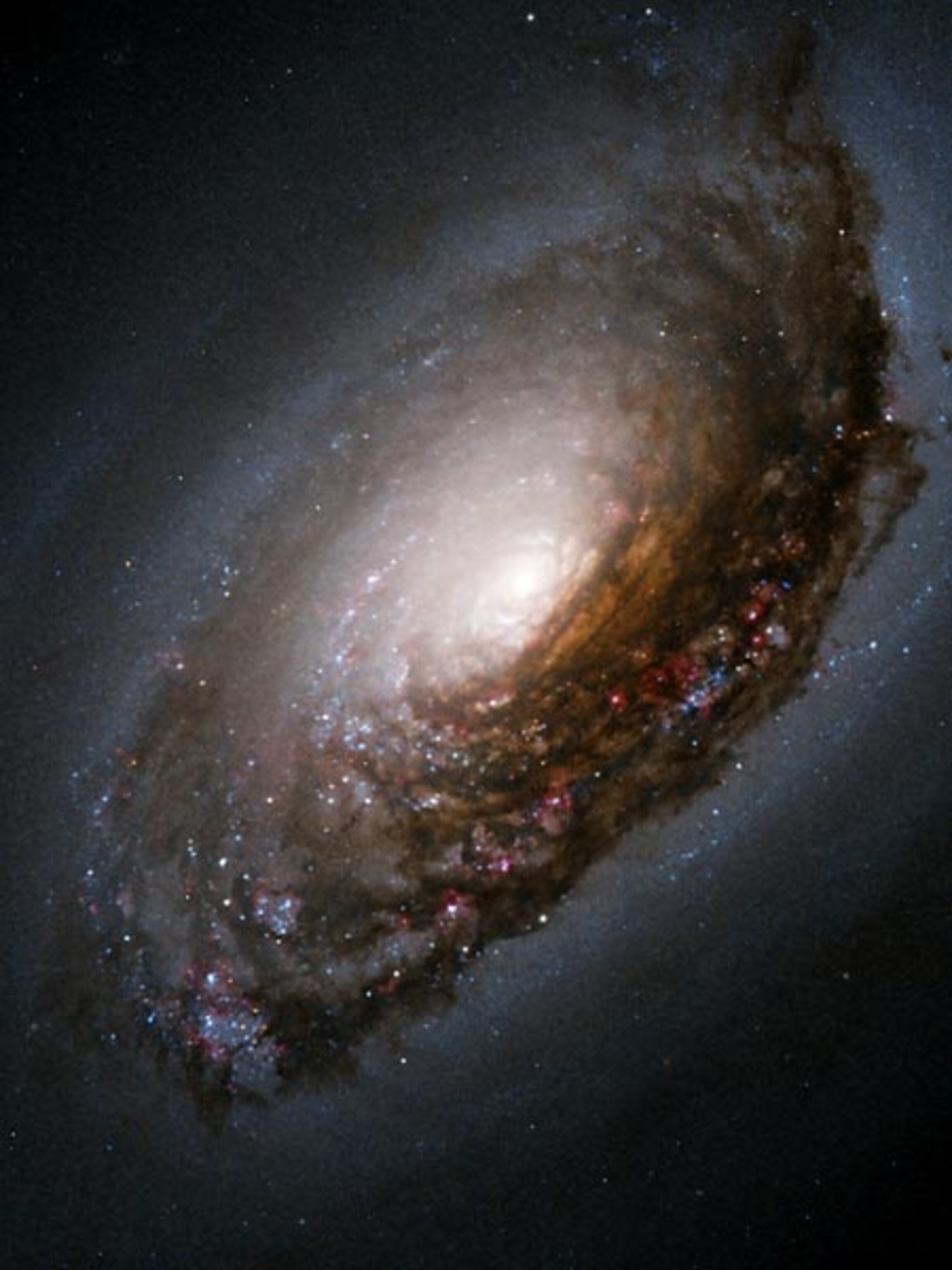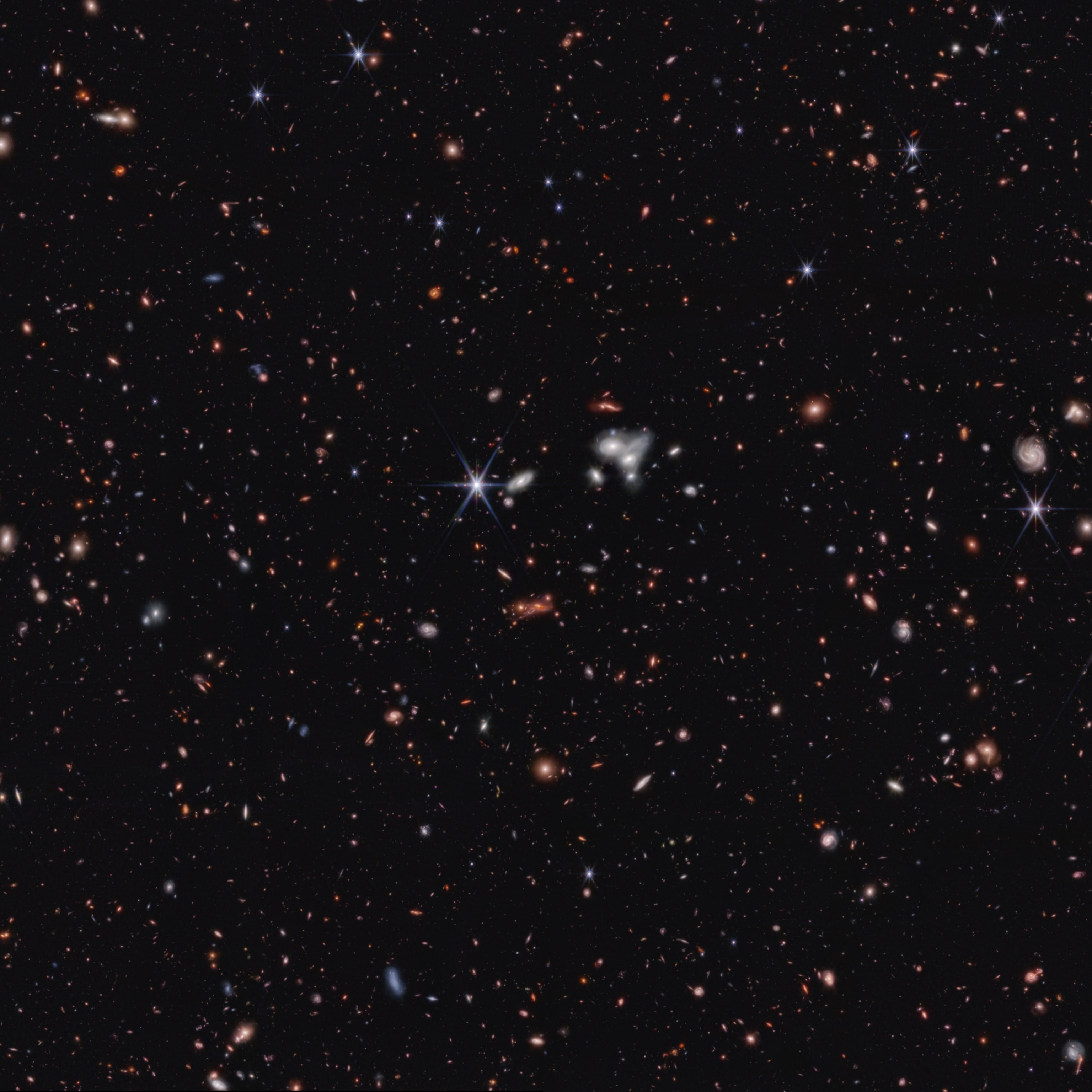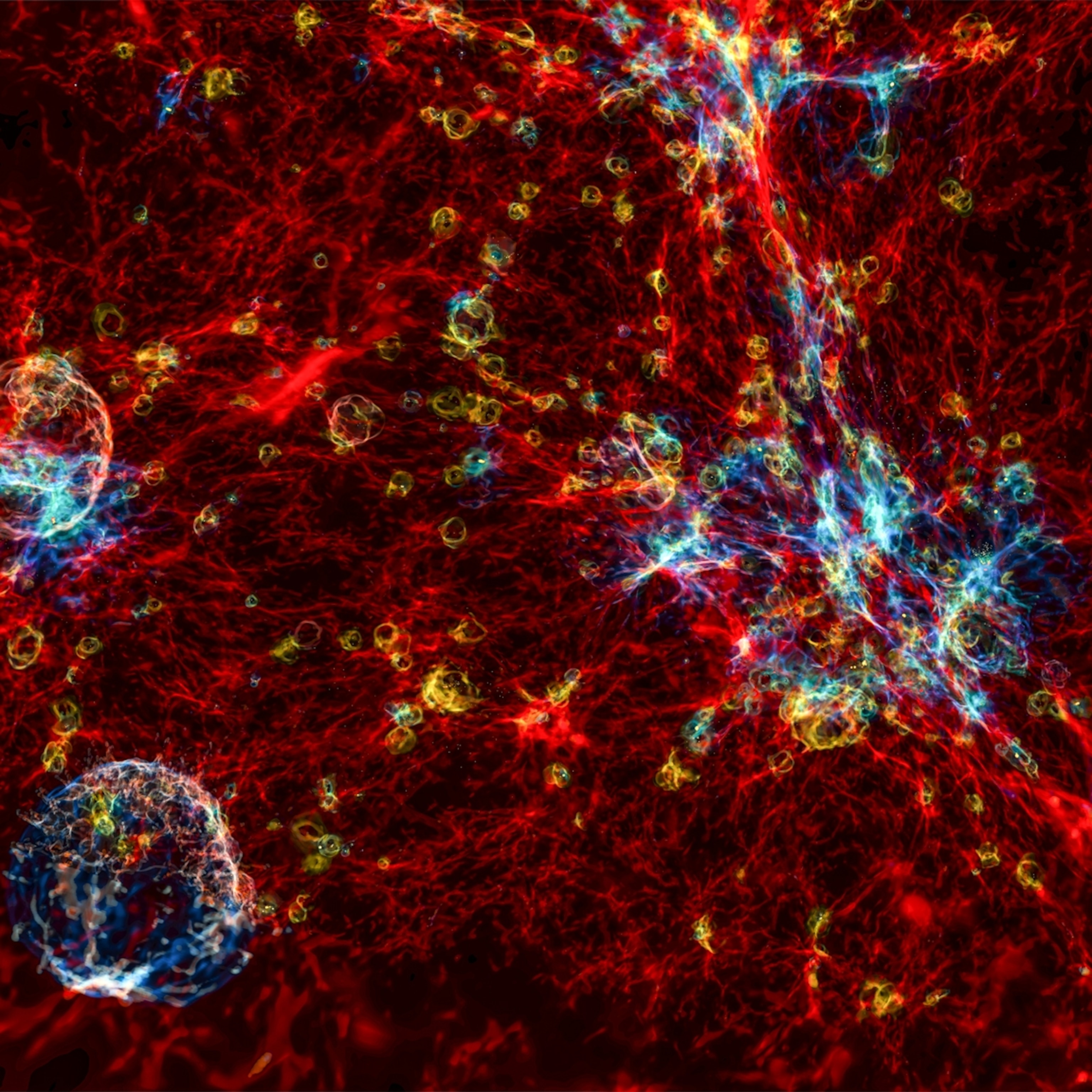
The universe might be acting weird. Cosmic 'lenses' may help reveal why.
A new method for measuring how fast the universe is flying apart could help astronomers wrestling with a possible crisis in cosmology.
From the moment it burst into existence more than 13 billion years ago, the universe has been expanding, with galaxies visibly flying apart from each other. To make sense of the physical laws governing the cosmos, astronomers have tried to measure one of the most important numbers in cosmology, the Hubble constant, which describes how quickly this expansion is happening and the universe’s age in turn.
But recently, multiple efforts to find a value for the Hubble constant have turned up a potential crisis in cosmology: the universe seems to be flying apart faster than expected. If confirmed, this baffling change would force astrophysicists to rethink the fundamentals of our universe, which currently don’t provide for such a change even after accounting for dark energy, a mysterious force driving an acceleration in the universe’s expansion.
Now, researchers have announced a new way to look at the problem by examining galaxies so massive, they warp spacetime around them and bend faraway light like giant lenses.
The results, published in the journal Science on Thursday, upend no apple carts on their own. Within the margins for error, the latest measurement is consistent with previous attempts to find this crucial cosmic value. But as a proof-of-concept, the paper demonstrates that this promising new method works, which is exciting because it makes fewer assumptions about our universe’s structure than other Hubble-hunting methods.
“We can provide a unique perspective, in terms of measuring the Hubble constant,” says lead study author Inh Jee, who completed the work while a postdoctoral researcher at the Max Planck Institute for Astrophysics.
Attack of the clones
Until recently, astronomers had only two main methods at their disposal for calculating the Hubble constant.
To infer its value from the early universe, scientists use data from the Planck satellite, which measured the cosmic microwave background, the afterglow emitted just 380,000 years or so after the big bang. Under certain assumptions about the fundamental nature of the universe, Planck data suggest that the Hubble constant should have a value of 67.4 kilometers a second per megaparsec, give or take 0.5. (A parsec equals a distance of about 3.26 light-years, and a megaparsec is a million parsecs.)
But researchers can also estimate the Hubble constant from far more modern stars and galaxies, and these methods don’t rely on those assumptions. Certain kinds of stars and stellar explosions have standard brightnesses; by comparing their expected brightnesses to their observed ones, researchers can work out how far away the objects must be. Astronomers then relate their distances to how quickly the universe’s expansion is driving us and them apart, which they can see from shifts in the objects’ light. This approach—refined by a research group called SH0ES—yields a Hubble constant value of 73.5, give or take 1.7.
“The analogy I like is, if you look at a two-year-old and you measured their height, you would predict their final height as an adult ... then you actually measure the height of the adult, and you go, Oh my gosh, it’s not consistent at all, they’re a foot taller we thought they would be!” says SH0ES leader Adam Riess, an astronomer at Johns Hopkins University.
To check whether this discrepancy is real, astronomers have sought other independent methods for getting at the Hubble constant. Enter COSMOGRAIL. The Swiss-based effort looks for and monitors gravitational lenses, regions of space that contain so much mass, they warp spacetime itself enough to bend any light that passes through.
Sometimes, a gravitational lens happens to fall directly between us and a faraway object, bending its light so much that we see several images of the object “cloned” around the lens’s edge. These images are not synchronized in time. One image’s light may have been bent less, giving it a straighter, quicker shot through the lens. Another image’s light may have been delayed by passing through especially warped spacetime.
Related: Incredible Pictures of Galaxies












COSMOGRAIL monitors gravitational lenses that happen to be backlit by quasars, extremely bright objects powered by supermassive black holes. Crucially, the lensed images of the quasar will flicker just like the quasar—but not all at the same time. These tiny delays depend on the distribution of mass within the lens and the distances between us, the quasar, and the lens. So if researchers figure out the mass needed to get the observed lensing, they can combine it with the time delays to estimate the Hubble constant.
Already, a group called the H0LiCOW collaboration has used this approach, and their estimate of of the Hubble constant—73.3, give or take 1.8—aligns with the SH0ES results. In July, H0LiCOW announced that there was less than a one-in-10 million chance that the difference between two teams’ combined results and the Planck value is a fluke.
A force awakens
And as Jee and her colleagues now show, H0LiCOW’s lensed quasars are the gift that keeps on giving: They can be sliced and diced in a completely different way to estimate the Hubble constant.
If the matter at the heart of a gravitational lens is a galaxy, researchers can measure how quickly that galaxy’s stars are rotating and then combine this data with the time delays to figure out how wide the galaxy must be. By comparing its true diameter to its apparent size on the sky, researchers can then pinpoint the lensing galaxy’s distance from us.
Jee and her colleagues focused on two objects named B1608+656 and RXJ1131-1231, gravitational lenses that are bending the light from faraway quasars. Using the new method, they figured out that B1608+656 is four billion light-years from us, and RXJ1131-1231 is 2.6 billion light-years from us.
They then combined these distances with shifts in the galaxies’ light to calibrate estimates for the Hubble constant. The researchers’ results say that its value is 82.4, give or take 8.4, putting the value in the same neighborhood as those from H0LiCOW and SH0ES.
Study coauthor Sherry Suyu notes that H0LiCOW is already taking advantage of the new method to hone its Hubble estimates, and she adds that in the future, Jee’s method will have much more data at its disposal. In the past few years alone, Suyu says, astronomers have found close to 40 new lensed quasar systems like the ones used in the Science study.
“It’s pretty remarkable,” says Suyu, a group leader at the Max Planck Institute for Astrophysics. “You can measure a distance to a galaxy billions of light-years away with a few percent uncertainty, [which] is not too shabby.”
While Jee’s study was working its way through review, another paper by Radosław Wojtak and Adriano Agnello, which published earlier this year in Monthly Notices of the Royal Astronomical Society, also demonstrated that the lensing technique works.
“This is just the starting point of this method,” says Wojtak, an astrophysicist at the University of Copenhagen. Yet more methods are still coming online. In the future, detections of ripples in spacetime called gravitational waves flung from collisions of neutron stars could provide yet another estimate.
But for now, cosmology still stands on a precipice—and it may be about to teeter into the unknown.
“The main question, I think, [is] if our cosmological model is in danger,” Wojtak says. “I don’t know the answer to this question, but I can say that we are getting to the point that we have to consider this option really seriously.”
Related Topics
You May Also Like
Go Further
Animals
- Orangutan seen using plants to heal wound for first timeOrangutan seen using plants to heal wound for first time
- What La Palma's 'lava tubes' tell us about life on other planetsWhat La Palma's 'lava tubes' tell us about life on other planets
- This fungus turns cicadas into zombies who procreate—then dieThis fungus turns cicadas into zombies who procreate—then die
- How can we protect grizzlies from their biggest threat—trains?How can we protect grizzlies from their biggest threat—trains?
Environment
- What La Palma's 'lava tubes' tell us about life on other planetsWhat La Palma's 'lava tubes' tell us about life on other planets
- How fungi form ‘fairy rings’ and inspire superstitionsHow fungi form ‘fairy rings’ and inspire superstitions
- Your favorite foods may not taste the same in the future. Here's why.Your favorite foods may not taste the same in the future. Here's why.
- Are the Great Lakes the key to solving America’s emissions conundrum?Are the Great Lakes the key to solving America’s emissions conundrum?
- The world’s historic sites face climate change. Can Petra lead the way?The world’s historic sites face climate change. Can Petra lead the way?
History & Culture
- Meet the ruthless king who unified the Kingdom of Hawai'iMeet the ruthless king who unified the Kingdom of Hawai'i
- Hawaii's Lei Day is about so much more than flowersHawaii's Lei Day is about so much more than flowers
- When treasure hunters find artifacts, who gets to keep them?When treasure hunters find artifacts, who gets to keep them?
Science
- Why ovaries are so crucial to women’s health and longevityWhy ovaries are so crucial to women’s health and longevity
- Orangutan seen using plants to heal wound for first timeOrangutan seen using plants to heal wound for first time
Travel
- A slow journey around the islands of southern VietnamA slow journey around the islands of southern Vietnam
- Is it possible to climb Mount Everest responsibly?Is it possible to climb Mount Everest responsibly?
- 5 of Uganda’s most magnificent national parks
- Paid Content
5 of Uganda’s most magnificent national parks






